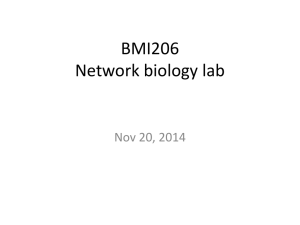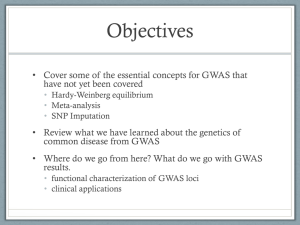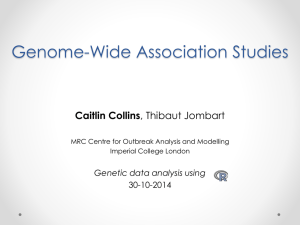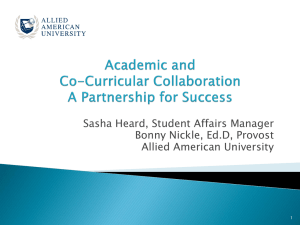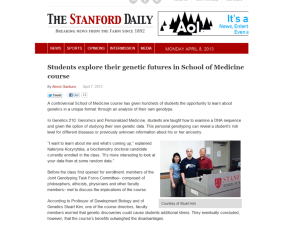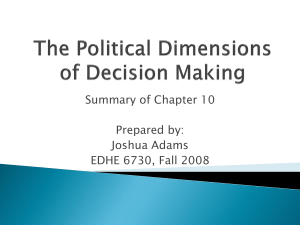Slides GWAS Panel Jason Fletcher MIP
advertisement
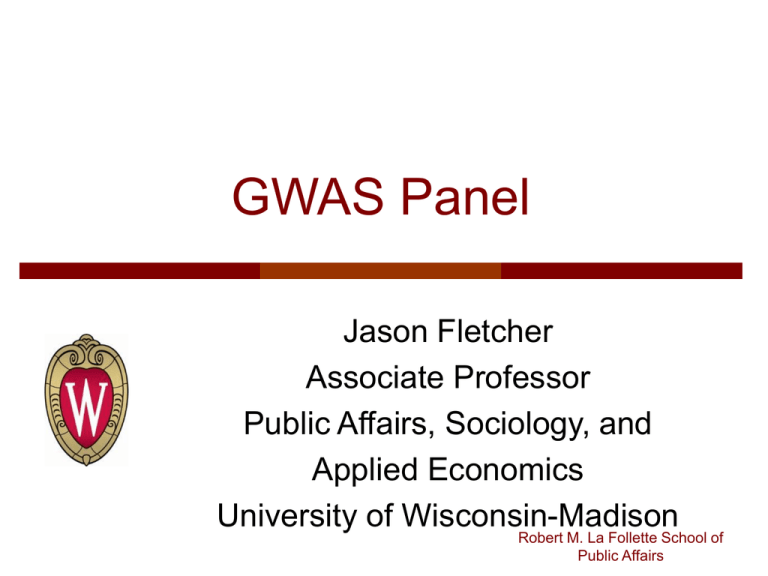
GWAS Panel Jason Fletcher Associate Professor Public Affairs, Sociology, and Applied Economics University of Wisconsin-Madison Robert M. La Follette School of Public Affairs Background Consumer of GWAS, not a producer I think the Science GWAS on educational attainment was excellent and important Main interest is using results from GWAS for GxE analysis Robert M. La Follette School of Public Affairs Opinions/discussion on: Should we (social scientists): Believe GWAS results? Produce GWAS results? Use GWAS results? Are GWAS results a first step or a final step? Robert M. La Follette School of Public Affairs GWAS methods: Some key aspects Fishing Many tests, focus on small p-values Amass large datasets to find small effect sizes Focus on main effects No GxG interactions; No GxE interactions Causality Temporality Controls (esp for population stratification/confounding) Replication The limited degree of overlap with (good) social science methods of inquiry is striking Robert M. La Follette School of Public Affairs Should additional social scientists be involved in GWAS? Does the structure of the enterprise suggest a natural monopoly? Large fixed costs, limited methodological or theoretical innovation from social science Do we need a second social science genetic association consortium? What is the value added by social scientists to the enterprise? Phenotype selection (Some) statistical suggestions ? Does GWAS use any of our comparative advantages? Could it? Robert M. La Follette School of Public Affairs Should social scientists care about genetic discovery through GWAS? How should we use GWAS findings? Measuring latent variables Attempts at providing upper bounds of genetic effects (?) Use in GxE analysis to examine heterogeneity of effects of social science interest Robert M. La Follette School of Public Affairs GWAS hits; next steps Animal/mechanistic models Narrow down to candidate genes/loci Genetic Risk Score Can we contribute anything here? Robert M. La Follette School of Public Affairs Cautionary tale about genetic risk scores Context: Question: do genetic factors moderate the effect of tobacco taxes on tobacco use? (GxE) NHANES data (1990-1994) Phenotype: tobacco use Genotype: two nicotinic receptor genes (CHRNA3, CHRNA6); two SNPs “Environment”: State level tobacco taxation levels Robert M. La Follette School of Public Affairs Robert M. La Follette School of Public Affairs Construct (basic) genetic score Main effects of each additional protective allele (GG/CHRNA6, CC/CHRNA3) Zero score: 30% smoking likelihood 1 score: 24% smoking likelihood 2 score: 21% smoking likelihood GxE Finding: No evidence of interaction with the environmental exposure (i.e. no GxE) Robert M. La Follette School of Public Affairs However Individually, the SNPs show strong interactions with taxation levels In opposite directions; consistent with what is known about potential mechanisms of the different genes CHRNA6—dopamine response to nicotinic exposure CHRNA3—a “brake signal” in our brain to stop nicotine exposure Suggests policies and genetic factors can be “substitutes” or “complements” Key: We usually know very little about functioning of top SNP hits, much less genetic scores based on all SNPs Result: False negatives in GxE analysis Robert M. La Follette School of Public Affairs Discussion GWAS Believe results? Produce new results on social science outcomes? Use results in social science work? Robert M. La Follette School of Public Affairs Robert M. La Follette School of Public Affairs Imperialism Comparative advantage Robert M. La Follette School of Public Affairs
